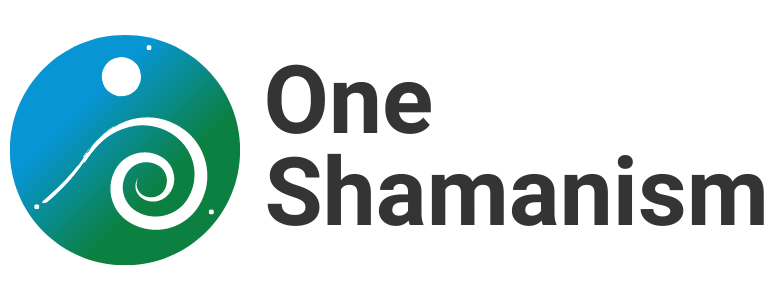Have you ever heard about the I Ching? It’s an ancient Chinese book that’s all about understanding changes in life. It is also called the “Book of Changes.” It’s pretty fascinating and has been used for thousands of years to help people make decisions and understand the world around them. Let’s dive into what it is, why you might want to use it, how it works, and the concepts of hexagrams, changing lines, and the yin and yang.
What is the I Ching?
The I Ching is one of the oldest Chinese texts. It’s a mix of philosophy, wisdom, and divination. Divination means trying to get insight or answers to questions from a spiritual or higher source. The book is made up of 64 parts, called hexagrams. Each hexagram is a unique combination of six lines that can be either broken or unbroken. These lines and their combinations are meant to represent different situations and aspects of life.
Why Use the I Ching?
You might be wondering, “Why should I even bother with something so ancient?” Well, many people find the I Ching helpful when they’re at a crossroads in life or when they need some guidance about their future. It’s not about predicting the future like a crystal ball. Instead, it’s more about offering insights and different perspectives on your situation. It can help you reflect on your problems and maybe even see solutions you hadn’t thought of before.
How Does It Work?
Traditionally, the I Ching is consulted by throwing coins or yarrow stalks, but coins are more common these days. Here’s a simple way to do it with coins:
- Think of a question you want guidance on.
- Toss three coins six times. Each toss will build one line of your hexagram, starting from the bottom.
- Each coin toss represents a line. Heads are worth 3 points, and tails are worth 2 points. Add up the value of the three coins.
- 6 or 8 points make a broken line (yin).
- 7 or 9 points make an unbroken line (yang).
- Once you’ve tossed the coins six times, you’ll have your hexagram!
Hexagrams and Changing Lines
Each hexagram is a stack of six lines, and each line can be either broken (yin) or unbroken (yang). The combination of these lines represents different energies and situations in life. But here’s where it gets even more interesting: some of your coin tosses might result in special numbers (6 or 9), which create “changing lines.” These lines suggest that the situation is in flux and can offer additional insights into how things might evolve.
After noting any changing lines, you can transform them (turn a broken line into an unbroken one, and vice versa) to get a second hexagram. This second hexagram provides more context and advice on how your situation might change or develop.
Yin and Yang
At the heart of the I Ching are the concepts of yin and yang. These are two opposing yet complementary forces that make up everything in the universe. Yin is the passive, receptive, and feminine force, often represented by broken lines. Yang is the active, creative, and masculine force, represented by unbroken lines. The I Ching teaches that balance and harmony between yin and yang are essential for a good life. The hexagrams show how these forces interact in different situations.
How to read the Outcome
Reading your I Ching hexagram can be a reflective and insightful process. Remember, reading the I Ching is a deeply personal and subjective experience. It’s about exploring possibilities, reflecting on your life, and considering new perspectives, rather than seeking definitive predictions. Here’s a step-by-step guide to help you understand the hexagram you’ve cast and how to interpret its meaning:
Step 1: Identifying Your Hexagram
First, make sure you’ve noted down the hexagram you received from your coin tosses or yarrow stalk method. Remember, each of the six lines will be either broken (yin) or unbroken (yang), starting from the bottom up.
Step 2: Finding the Hexagram in Your I Ching Book
Use the I Ching book you have to find the hexagram. Books usually list hexagrams in a specific order, and many have a chart or index at the beginning to help you quickly find the one you’ve cast.
Step 3: Reading the Main Text
Start by reading the main text or judgment associated with your hexagram. This provides an overview of the situation or issue at hand. It might be somewhat cryptic, so take your time to reflect on what it could mean in the context of your question or situation.
Step 4: Understanding the Lines
Next, look at the specific lines in your hexagram, especially if you have any changing lines (lines that resulted from a total of 6 or 9 points in your coin toss). The text associated with each line can offer more detailed and personalized insights. The lines are read from the bottom up, and each one can add a layer of meaning to the overall interpretation.
Changing Lines: If you have any, these are particularly important. They represent dynamic energies and changes in your situation. The advice or message in these lines can be very significant and often point to the actions you might consider or the attitude you might adopt.
Step 5: Transforming the Hexagram (If You Have Changing Lines)
If your hexagram contains changing lines, you’ll transform these lines to their opposite (changing broken lines to unbroken, and vice versa) to get a second hexagram. This second hexagram provides additional insights, showing the potential outcome or the direction in which things are moving. Read the text for this new hexagram and its lines as well.
Step 6: Reflection
Take some time to reflect on the readings. The I Ching is not about direct answers but about offering perspectives. Think about how the insights apply to your situation, question, or life in general. Sometimes, the meanings become clearer with time or upon deeper reflection.
Step 7: Application
Consider how the wisdom of the I Ching can be applied to your life. It might offer a new way of thinking about your issue, suggest a course of action, or encourage you to adopt a particular attitude.
Tips for Interpretation:
- Context: Keep the context of your question in mind. The same hexagram can offer different insights depending on the specific situation you’re consulting about.
- Intuition: Pay attention to your own intuition and feelings as you read. Sometimes, a particular part of the text might stand out to you or resonate more strongly.
- Patience: The I Ching can be subtle and complex. Don’t worry if you don’t understand everything immediately. The process of consulting the I Ching is also a process of learning and personal growth.
In Summary
The I Ching is a tool for self-reflection and wisdom that’s been used for thousands of years. It’s not about fortune-telling but about understanding the changes in life and gaining insights into your questions. By throwing coins to create hexagrams, interpreting changing lines, and contemplating the balance of yin and yang, you can use the I Ching to explore different perspectives on your life’s challenges.
Whether you’re looking for guidance, wisdom, or just curious about this ancient practice, the I Ching offers a unique way to reflect on life’s ups and downs. So, next time you’re feeling stuck or uncertain, you might just find the I Ching to be a helpful companion on your journey.
Further Reading
When it comes to exploring the I Ching and its profound wisdom, there are several books that stand out for their clarity, depth, and accessibility, especially for beginners. Here are a few recommendations that can guide you on your journey with the I Ching:
“I Ching: The Book of Change” by John Blofeld
This version of the I Ching is praised for its clear translation and insightful commentary. Blofeld offers a deep dive into the philosophy and practical application of the I Ching, making it a great choice for those who are new to this ancient text.
“The I Ching or Book of Changes” (The Richard Wilhelm Translation)
Translated by Richard Wilhelm and rendered into English by Cary F. Baynes, this edition is one of the most respected and widely used versions of the I Ching. It includes a comprehensive introduction by Carl Jung and detailed commentaries on each of the hexagrams.
“The Complete I Ching: The Definitive Translation” by Alfred Huang
Alfred Huang’s translation is known for its accuracy and readability. Huang, who was raised in China and deeply immersed in Confucian and Daoist teachings, brings a rich understanding of the cultural and philosophical context of the I Ching.
“Taoist I Ching” by Liu I-Ming, translated by Thomas Cleary
This version of the I Ching is from the perspective of Taoist inner alchemy. Thomas Cleary’s translation offers insights into how the I Ching relates to Taoist practices and thought, making it an interesting read for those who are also exploring Taoism.
John Minford’s translation is celebrated for its poetic and philosophical depth. This edition provides a fresh perspective on the I Ching, with extensive commentaries and a rich introduction to the historical and cultural background of the text.
“The Everyday I Ching” by Sarah Dening
Sarah Dening’s book is geared towards those looking for practical advice and guidance from the I Ching. It simplifies the interpretations and makes the wisdom of the I Ching accessible for daily life decisions and challenges.















